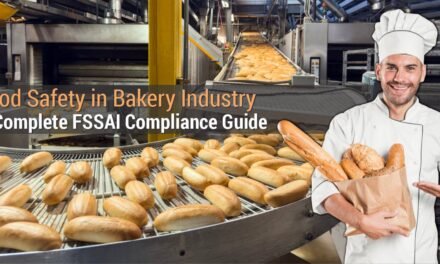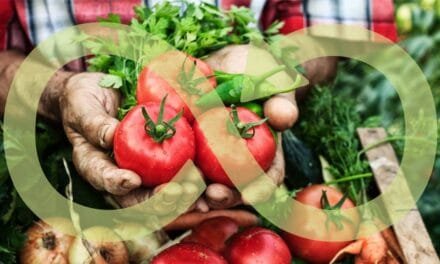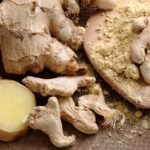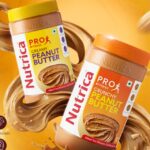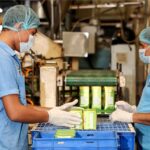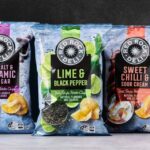Quality assurance is the biggest marketing tool any food manufacturer can adopt. When a processor can assure the consumers that they will continuously get high-quality products, they (consumers) become the most important asset for the company in terms of brand publicity, write Anil Gupta and Anil K Verma.
Table of Contents
Quality is a measure of the degree of excellence or acceptability by the consumer. It is also defined as the combination of attributes or characteristics of the products that have significance in determining the degree of acceptability of the product to a user. The industry defines quality “as the measure of purity, strength, flavour, colour, size, maturity, workmanship or any other distinctive attribute or characteristics of the product”. According to the USDA, “quality is the combination of attributes or characteristics of a product that has significance in determining the degree of acceptability of the product to the user”. For the consumers, “Quality means wholesomeness, freshness, good nutritional value, and good organoleptic (texture, colour, aroma, and flavour) properties.
Quality as a consequence of the originality of a product reflects the inherent strength of the product. It is also termed as ‘Spacial Hallmark’ which means the product has something about it which makes it distinct from the similarly placed things. Originality also signifies the essential element of Individuality. The acceptability of produce by the consumers depends on the intensity of individuality that the product carries and which is singularly impressive.
Understanding Qualitative Attributes in Food Products
Quality, therefore, refers to a general framework that serves to hold all the constituents of the commodity together. So, comprehensively explained and introduced commodity has a point of special importance; the merits which call for mention with broad and deep knowledge of the commodity to profit by such varied experiences. Generally, quality accounts for the expression of cultured customers of a refined society. On the whole, food quality is understood as a severe devotion to launch a new commodity in the consumer’s court. Thoroughly, typical quality gives unique value with wonderfully varied interest in the fondness of the commodity. Everything that for good or evil has entered into the making of a product has also entered into the texture of that product, commodity, or thing.
The qualitative attribute is a taste change exercise, and it reflects the powerful value-added instinct or characteristic of the product. It also signifies genetic makeup or ancestry or assumed perfection, and that channelize a new line of influence. The interest that a particular commodity produces/generates in its consumer acceptability is governed by certain prevailing tastes/attributes. These tastes/attributes may last for a time only, and these tastes/attributes differ enormously from those of every other. These qualitative attributes impart variety to the quality and the quality of acceptability.
YOU MAY ALSO BE INTERESTED IN…
- Estonia Strengthens Food & Beverage Trade Ties with India
- NITI Aayog Declares Mizoram as “Ginger Capital of India”
- Gulfood 2026: Expanding Horizons in Global Food Trade
- Nutrica Launched Peanut Butter to Strengthen Wellness Portfolio
- Govt to Launch New Round of PLI to Boost Food Processing Growth
Overall, the rated ability of a product, the quality is necessarily moulded by the Culture, Ideals, Mental and Moral Tendencies of the masses to which it has been introduced, and therefore, overall acceptability to a large extent is determined by these. The product-consumer relationship with particular regard to the quality of the produce, however original it may seem to be, is often due to the way it meets or anticipates the general taste of the public to which it appeals.
What is Quality Assurance and Why it Matters
Quality Assurance, in contrast to quality control, is the implementation of quality checks and procedures to immediately correct any failure and mistake that can reduce the quality of the interim products at every production step. According to the International Standards Organization (ISO 8402 – Terminology), Quality assurance is “all those planned and systematic actions necessary to provide adequate confidence that a product or service will satisfy given requirements for quality.” Quality assurance systems in the food industry are much more extensive in scope than quality control programs.
They include the inspection, testing, and monitoring activities of quality control programs, along with additional activities that are devoted to the prevention of food safety hazards and quality defects. The activities are integrated and interrelated to form a system. Quality assurance systems are intended to provide confidence to a food company’s management, its customers, and government regulatory agencies that the company is capable of meeting the food quality and food safety requirements.
These quality systems include documents that describe operations and activities that directly relate to food quality and safety. An example of a quality assurance system is the ISO 9001:1994 quality assurance system standard, which was replaced by the ISO 9001:2000 quality management system standard. In companies that operate with quality management systems, the quality assurance activities are integrated into the quality management systems.

Standard QA Systems: GMP, GHP, GAP, HACCP, ISO, and TQM
Quality assurance (QA) is a part of quality management focused on providing confidence that quality requirements will be fulfilled (ISO 9000:2000). All the planned and systematic activities implemented within a quality system can be demonstrated to provide confidence that a product or service will fulfill requirements for quality. Quality Assurance, in contrast to quality control, is the implementation of quality checks and procedures to immediately correct any failure and mistake that can reduce the quality of the interim products at every production step.
Among Quality Assurance (QA) systems, GMPs (Good Manufacturing Practices), GHPs (Good Hygiene Practices), GAPs (Good Agricultural Practices), and HACCP (Hazard Analysis and Critical Control Points), ISO, and TQM are the prerequisites (van der Speigel et al., 2003). Integrated Management systems, such as ISO 9000, or integrated management systems like ISO 22000:2005 (Food safety management systems), are also accessible for producers.
The quality assurance systems can be classified according to the extent of the activities they cover, in:
- basic safety systems: prerequisites (GAPs, GMPs, GLPs, etc.);
- advanced safety systems such as HACCP;
- integrated food safety management – ISO 22000;
- basic quality management systems – ISO 9001;
- advanced quality management systems – ISO 9004.
Quality Assurance systems take a much wider view of what is involved in satisfying customers’ needs. The quality assurance system focuses on the prevention of problems and not simply on their cure. Quality assurance (QA) describes and manages the activities of control, evaluation, audits, and regulatory aspects of a food processing system. The program consists of an in-house consulting organization; it evaluates the quality program and gives advice, suggestions, and instructions for its improvement. QA may audit the system and assist in making improvements. Still, the planning, organizing, staffing, directing, and controlling of the quality program are in the hands of upper and production management.
The divisional quality control staff promotes quality in the division and assists and consults with production as required; the responsibility for the quality of divisional products rests directly with production. Quality assurance can only be operated when staff are well-trained and motivated. Workers are usually well aware of the causes of most problems, and when quality assurance is used correctly, they can resolve most quality problems within their control.

Need for Food Quality Sssurance
Customer Expectations: Customers have become more demanding and knowledgeable. They are more concerned about the ingredients of the food products and hence maintaining optimum quality standards in the food industry has become very necessary.
Environmental Concerns: Nowadays, people are more concerned about the environment and environmental protection laws have become more stringent. Hence, employing environmental friendly methods in the food industry has become necessary. Quality assurance plays a big role in all this.
Organic Foods: There is more demand for organic foods because people have become concerned about the potential adverse effects of chemicals used in farming on the environment and health. Hence, quality monitoring and guarantee ensure that the chemicals are within the specified limits in any food product.
Technology: With the development of technology, various methods for food processing and other food-related activities have emerged. These methods provide safer and higher-quality food to the customers. Today all organisations related to food have to ensure good quality systems to compete in the market.
Regulatory Requirements: Food being a critical element of life, the regulatory agencies have also put in place stringent requirements for its safety and quality. Quality assurance systems help the food industry to meet these requirements consistently and deliver food that is fit for consumption.
Key Functions of a Quality Assurance Department
Compliance with Specifications: Legal requirements, industry standards, internal company standards, shelf-life tests, customers’ specifications.
Test Procedures: Testing of raw materials, finished products, in-process tests.
Sampling Procedures and Schedules: Suitable sampling schedules should be used to maximize the probability of detection while minimizing the workload.
Record-keeping and Reporting Procedures: Maintenance of all QA records so that customer complaints and legal problems can be dealt with.
Troubleshooting: Solution of problems caused by poor quality raw materials, erratic supplies, malfunctioning process equipment; investigation of reasons for a poor quality product to avoid repetition.
Special Problems: Customer complaints, production problems, personnel training, etc. A typical QA department may include a chemistry lab, a raw materials inspection lab, a sensory lab, and a microbiology lab for ensuring the quality of food produced and for attracting consumers.
Improving Processes Through Strong QA Systems
An important aspect of the work in manufacturing is to promote the interest of the workers in their jobs. They should be encouraged to observe the operation and to collect information about important process developments that the enterprise could use and may eventually depend upon for success.
Standards: QA department should develop, review, and implement internal standards and keep track of external standards.
QA responsibility also includes collecting and analyzing data related to quality. Forming and leading corrective-action teams to make specific improvements, facilitating quality actions of others and evaluating tools, techniques, procedures, standards, etc.
FAQs About Quality Assurance
What defines quality a quality of food?
The industry defines quality “as the measure of purity, strength, flavour, colour, size, maturity, workmanship or any other distinctive attribute or characteristics of the product”.
What is Quality assurance (QA) in food industry?
Quality assurance system in the food industry are much more extensive in scope than quality control programs. They include the inspection, testing, and monitoring activities of quality control programs, along with additional activities that are devoted to the prevention of food safety hazards and quality defects.
What are qualitative attribute for food?
The qualitative attribute is a taste change exercise and it reflects the powerful value-added instinct or characteristic of the product.
What are the prerequisites for quality food?
Among quality assurance (QA) systems, GMPs (Good Manufacturing Practices), GHPs (Good Hygiene Practices), GAPs (Good Agricultural Practices) and HACCP (Hazard Analysis. Critical Control Points), ISO, TQM are the prerequisites.
Also Read: Sensory Evaluation for Determining Quality of Food Products
Also Read: Quality And Food Safety Standards for Indian Pickles Achaar
Also Read: Importance of Quality Control of Livestock Products
Reference/Further readings
- Ahire S L. (1997). Management Science- Total Quality Management interfaces: An integrative framework. Interfaces 27 (6) 91-105.
- Bolton A. (1997). Quality management systems for the food industry: A guide to ISO 9001/2. London: Blackie.
- Guleria S. P. S. 2004 Quality Assurance for Fruits, Vegetables and their Products in: Postharvest Technology of Fruits and Vegetables. L.R. Verma and V.K. Joshi (eds), vol 1 Indus Publishing Company, New Delhi, pp 291-303.
- Guleria, SPS and Anil Kumar Verma. 2007. Nutritional Guide to all Ages. Welcome Press, A43/1, Naraina Industrial Area, phase I, New Delhi, pp1-68.
- Guleria, SPS. 2006. Food Security-a challenge. The Tribure December 24, page 13.
- Guleria, SPS. 2014. Recognize People’s Science for value addition in Posthavest Management of Horticultural crops. Indian Journal of Economics and Development. 10(1):155-161.
- Guleria, SPS.2007. Enhancing Food and Nutritional Security through Postharvest Management and Value addition in present era of Globalization. In: Postharvast Management and Value addition. AK Goel, Rajinder Kumar and SS Mann (eds.). Daya Publishing House, Delhi, pp 99-117.
- Hoogland JP, Jellema A, Jorgen MTG. (1998). Quality Assurance Systems. In: W.M.F. Jongen, M.T.G. Meulenberg Eds., Innovative of Food productions systems: product quality and consumer acceptance, Wageningen: Wageningen Peris.
- Sikora T, Strada A. (2003). Safety and Quality Assurance and Management Systems in Food Industry: An Overview, available online at http://www.ip.aua.gr/Studies/Sikora-Strada_final.pdf.



